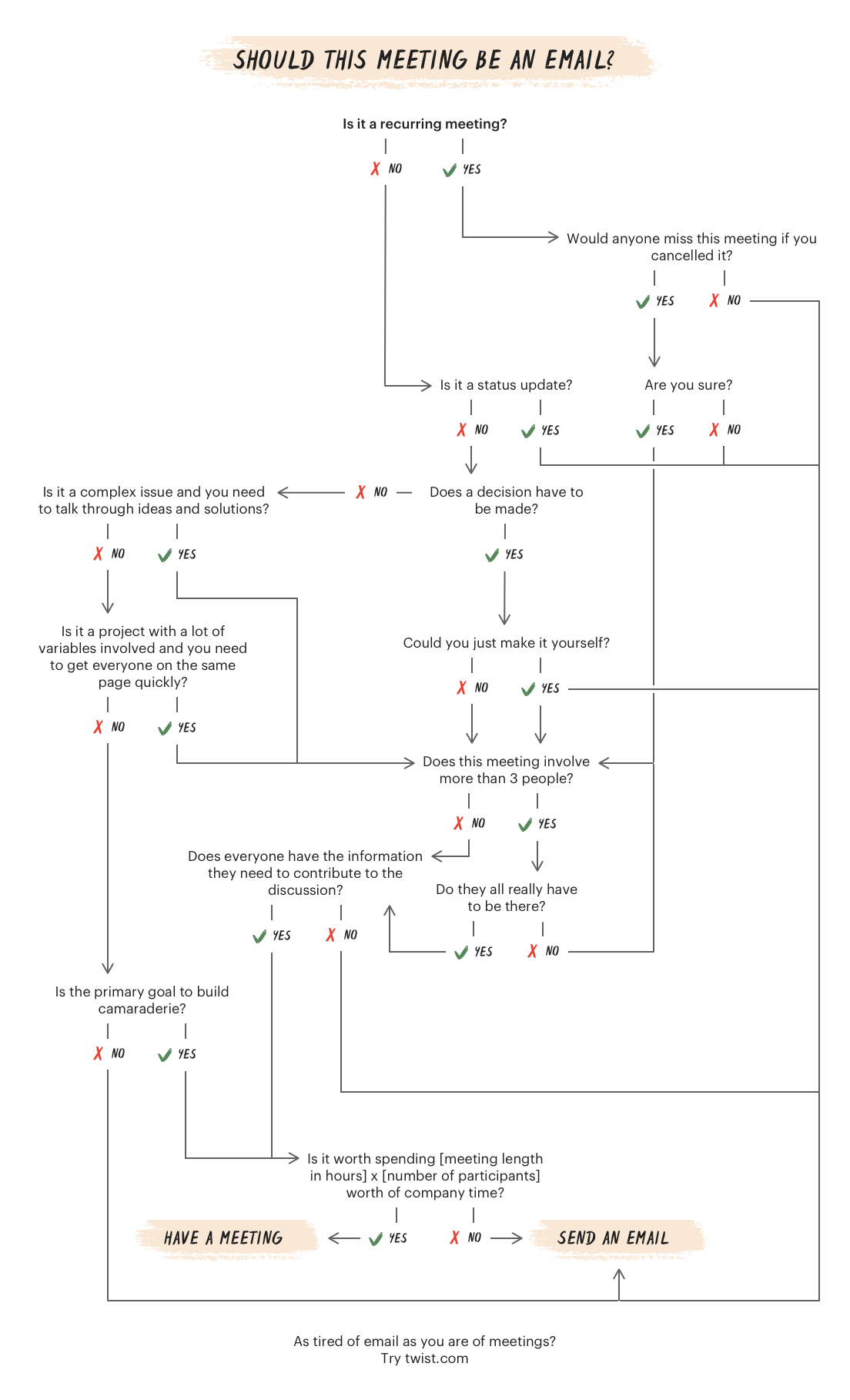In today's fast-paced work environment, effective communication is key to productivity and efficiency. While meetings are an essential part of collaboration and decision-making, they can also be time-consuming and interruptive.
I was recently asked a question that I had to ponder by one of the newer (and younger) members of the team. They asked, “When should a meeting be an email?” I reflected on the question for a moment, and my response went something like this:
A meeting should be an email when the information being conveyed can be effectively communicated through email and does not require real-time interaction or discussion. Here are some scenarios where I think it's more appropriate to send an email instead of holding a meeting:
- Information sharing: If you need to distribute updates, reports, or general information to a group of people, email is an efficient way to do so. This allows recipients to review the information at their own pace.
- One-way communication: When the purpose of the interaction is to inform or provide instructions without the need for immediate feedback or discussion, an email is usually sufficient.
- Documentation: If you need to record or document specific details, decisions, or agreements, sending an email ensures there's a written record for future reference. Adding a Delivery/Read Receipt is a good idea, but remember the receiver can decline the response.
- Routine updates: For regular or routine updates that don't require extensive discussion, sending an email saves time for all parties involved.
- Time-sensitive or asynchronous communication: When participants are in different time zones or have conflicting schedules, an email allows for asynchronous communication, ensuring everyone can read and respond when it's convenient for them.
- Pre-meeting preparation: Sometimes, it's helpful to send relevant documents, reports, or materials before a meeting so that participants can review them in advance. This ensures that the actual meeting time can be used more productively for discussions and decision-making.
- Simple inquiries or requests: If you have a quick question or need a straightforward answer, it's often more efficient to send an email rather than scheduling a meeting. Obviously, a phone call or a text/WhatsApp message may be even better.
- Wide distribution: When you need to communicate with a large group of people, scheduling a meeting can be challenging, and sending a detailed email can reach everyone effectively.
- Conflict resolution: In some cases, addressing conflicts or disagreements over email can give people time to reflect and respond thoughtfully, avoiding heated discussions in real-time.
However, keep in mind that some situations are better suited for face-to-face or real-time discussions, such as brainstorming sessions, complex problem-solving, team-building exercises, or situations where emotions and nuances are better conveyed through voice and body language. In such cases, a meeting would be more appropriate than an email. Ultimately, the choice between a meeting and an email should be based on the nature of the information to be conveyed and the level of interaction required to achieve the desired outcome.
Once I had finished, I reflected on my reply, and I decided to go and see what others thought on this subject and found several articles discussing the subject. One contained a great flowchart that I now have stuck to my home and office walls.

Source: https://blog.doist.com/meeting-vs-email/
What I learned from the research is that effective communication is key to productivity and efficiency. While meetings are an essential part of collaboration and decision-making, they can also be time-consuming and interruptive. As a result, it's crucial to evaluate whether a meeting is the most appropriate communication method for every situation. In many cases, sending an email can be a more efficient and effective way to convey information.
I found a few other reasons for email over a meeting that I will add to my own list going forward:
- Routine operational matters
- Simple requests or confirmations
- Multiple participants or scheduling challenges
- Low urgency or non-critical matters
By strategically deciding between meetings and emails, organizations can enhance productivity, minimise interruptions, and promote a streamlined workflow for their team.
Mark Wilson is technical director for Vertali, where he heads the company’s technical teams. He is a global thought leader in mainframe technology and security and is well-known across the industry. With over 40 years’ experience working in IBM Z across numerous industries and diverse mainframe environments, and in technical, management, and strategic roles, his deep expertise and delivery-focused approach are highly valued by Vertali clients, IBM, and third-party technology partners. Mark is also Region and Conference Manager for Guide Share Europe (GSE) UK.